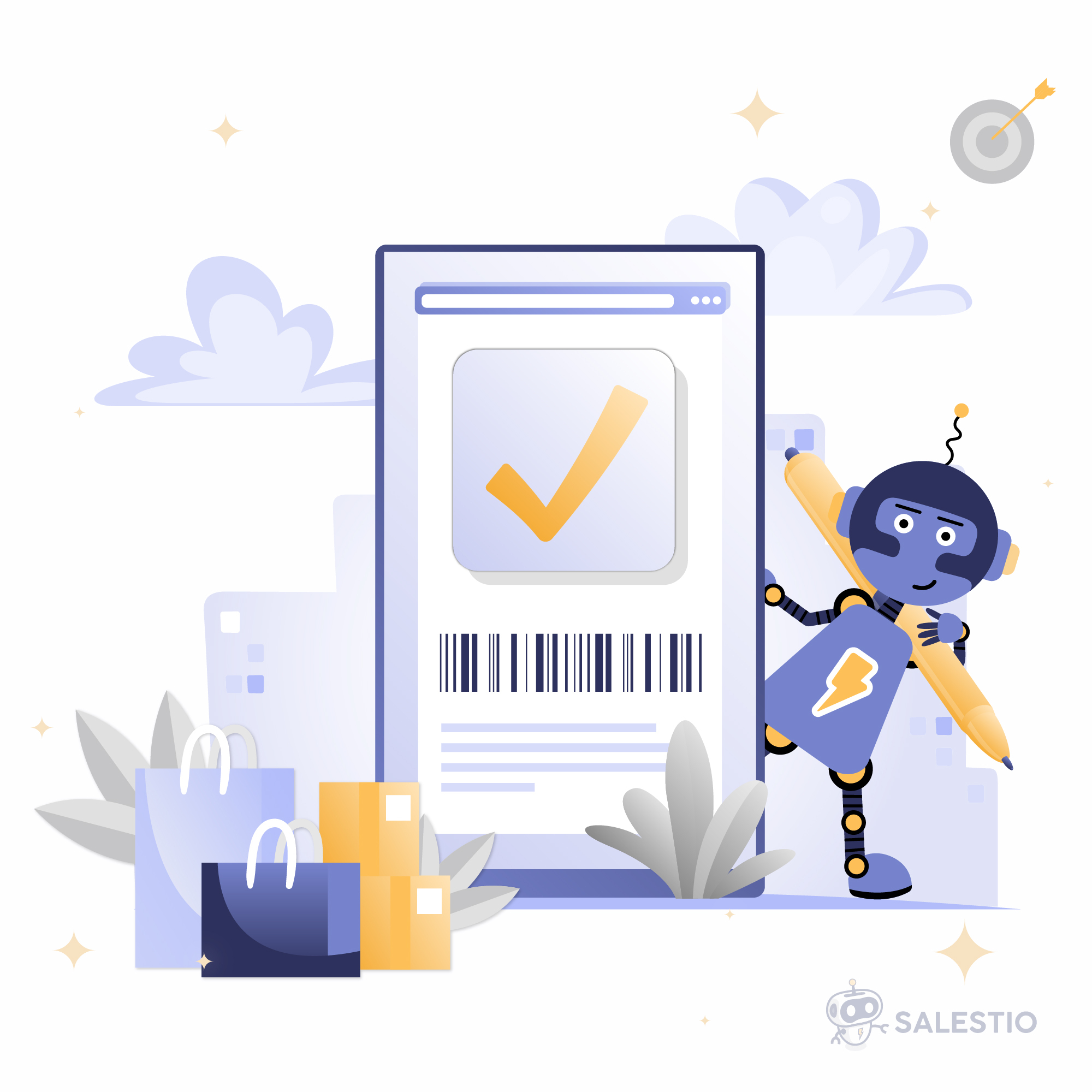09 Jan'26

Etsy Description Templates: Customize your listings with Salestio
Full and accurate descriptions play an important role in online sales. A lot of the time, shoppers learn the most about your product from the Etsy description. It is also one of the most important components to increase your search engine ranking. A description is required to publish a listing on Etsy. In Salestio, you […]
02 Jan'26

Salestio for BigCommerce: Settings Explained
Most of the features in Salestio work without the need to adjust the settings. In the Settings tab, you can configure the app to better fit your workflow. In this article, we will explain the available options and how they can help you customize the Salestio app. The Settings page in Salestio features tabs for […]
19 Dec'25

Salestio’s 2025 Year in Review
Happy holidays! Wishing you a holiday season filled with cozy moments and cherished memories 🥳December comes to an end, and it’s a good time to look back at what was new in Salestio over the past year. Throughout 2025, we introduced quite a few new features and improvements aimed at making the app more reliable […]
21 Nov'25

Best practices in email marketing for online sellers
Email marketing is one of the most effective tools that marketplace sellers can use to build customer loyalty. Sellers can focus on targeted messaging and turn simple emails into a powerful growth tool for boosting repeat purchases and standing out in the online space. In this article, we will focus on the key things to […]
07 Nov'25

Send BigCommerce products to Etsy with Salestio
Salestio is a great tool to expand your BigCommerce store by syncing it with Etsy. In this article, we will outline the steps to set up Salestio for sending BigCommerce products to Etsy and set up sync between the two platforms. Add an Etsy account Configure the Global Profile (Optional) Add a Creation Profile Add […]
31 Oct'25

Sell Bundles and Kits for Black Friday and Holiday Sales
The upcoming holiday season is a perfect time to get creative with the product offers and introduce bundles and kits to your catalogue. At this time, buyers are actively looking for convenience and gift ideas. Grouping products together is beneficial both for sellers and buyers. For you, as a seller, it helps increase the average […]
24 Oct'25

Avoid common mistakes when Selling on Amazon, Etsy & eBay with Salestio
Selling online can have a lot of nuance. Attention to detail can go a long way towards building a fast-growing store. In this article, we will go over the most overlooked details related to listings on Amazon, eBay, or Etsy, and share tips on how Salestio can help keep the product pages consistent. General mistakes […]
17 Oct'25

Manual vs Automated actions in Salestio
Salestio aims to free up some of the schedule for marketplace sellers, so a lot of the features in the app are automated by default. In this article, we will go over the key automation options, explain what works out of the box, and help you configure them to best fit the needs of the […]
10 Oct'25

Key Salestio features in BigCommerce
Salestio serves as a means to connect your BigCommerce store to Amazon, eBay, and Etsy. In this article, we will go over the main features that help keep your listings in sync with the BigCommerce store. Send BigCommerce catalog to marketplaces Salestio can send the items from your BigCommerce store to marketplaces of your choice. […]
03 Oct'25

List on Amazon, eBay and Etsy without barcodes: errors and solutions
In today’s article, we will go over the barcode-related specifics of publishing products. Each marketplace has its own requirements, so we will explore how Salestio works for each platform. Amazon has the most regulations regarding the barcodes. Barcodes are one type of product identifier out of many. Check the article below to learn more about […]
- 1
- 2